Why digitize factory operations?
Weever is Operational Excellence Software that empowers the pursuit of perfection by enhancing operational visibility, collaboration and productivity in quality, maintenance, safety and production.
This article reviews the following topics:
There are countless benefits to transitioning paper and spreadsheet-based processes to a digital framework.

Digitization is the process of eliminating paper from your operations.
Paper has been used for centuries to collect data and manage reporting. And there is still a use for paper in today’s modern continuous improvement process. For example, the “A3” report is named after the size of paper that is recommended to use. Paper can be useful for quick note taking and brainstorming.
However, in today’s increasingly competitive global economy, paper has inherent challenges that cannot be overcome. Manufacturers are continuously improving towards the pursuit of perfection. Perfection is basically the most optimal and efficient way to produce the most units at the highest possible quality and the lowest possible price. Of course, perfection is a concept that can never be achieved, but the pursuit of it is what is important.
Many manufacturers have embraced digitization for production (with sophisticated ERP systems like SYSPRO) the office (with productivity software like Microsoft) and logistics, but have done little to digitize the factory floor.
The irony is that the biggest benefits of digitization will be realized, in most cases, where the product is manufactured. This has been realized by some of the world’s largest manufacturers, like Mars and Unilever, who have spent massive resources to digitize factory operations.
The core benefits of factory digitization include:
1. Cost Savings
Enhanced efficiency and productivity creates opportunities to save money and reduce waste.
Paper forms and spreadsheets require time and effort to work. Administrative tasks cost and add a lot of waste to your processes.
Digitization automates mundate, repeatable tasks, which not only accelerates processes but also saves operational costs by way of headcount and productivity.

2. Real-Time Visibility
Forms are submitted, projects move forward, KPI reports are updated, and supervisors are notified instantly.
Paper forms hang out on the floor until they are completed and then they are provided to a person to process the information and then finally a manager might see the data and realize there is a problem. If this sounds familiar, it is a common issue of paper-based operations.
Digitization allows for predefined business rules to play out automatically when a form is submitted by someone on the factory floor. A benefit of this is that things happen in “real-time”.
This means that you don’t have to wait until the product has left the factory to understand an issue needs to be resolved. When changes are made, your data is updated in real-time, which means you have your finger on the pulse of your operations.
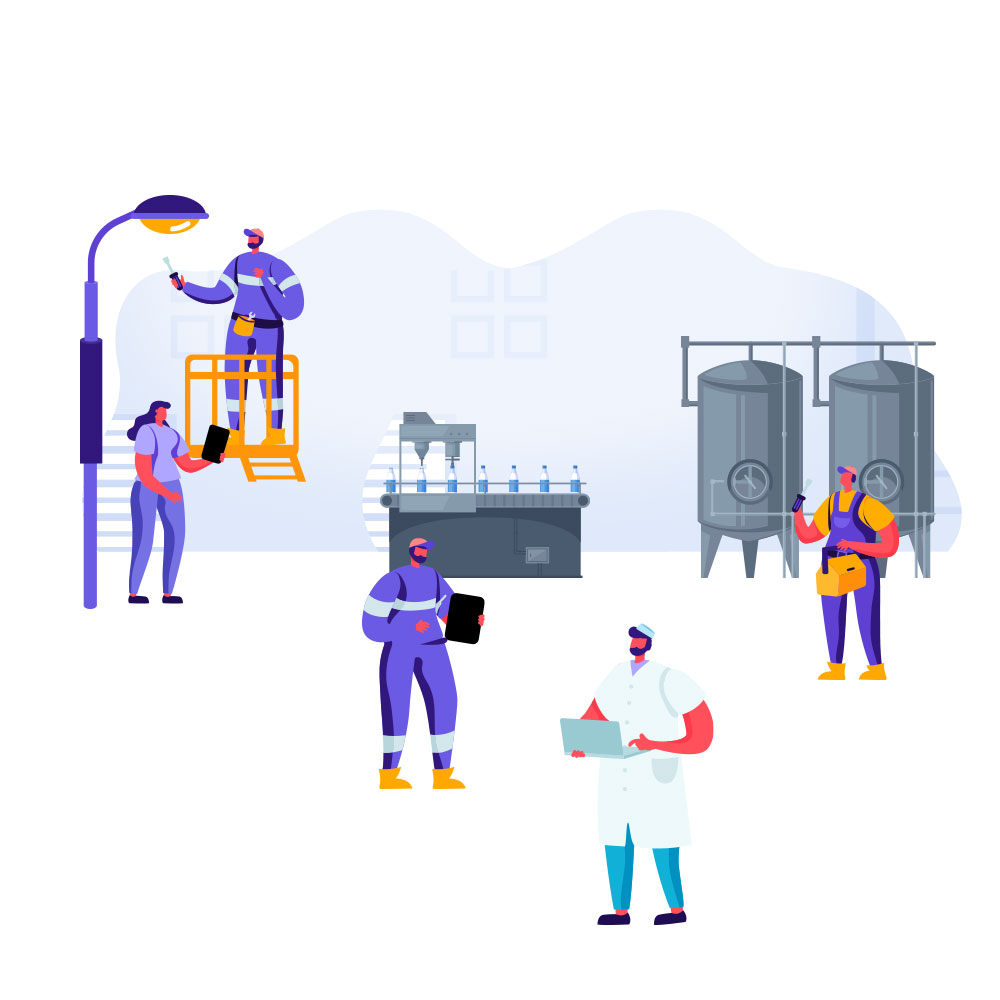
3. Automation
Mundane, repeatable administrative tasks are automated, which saves time and moves projects forward faster.
Digitization allows for algorithms, a set of predefined rules, to automatically execute certain mundane and repeatable tasks. This means that those tasks are completed quicker, more reliably and less expensively than hiring a person to do them.
For example, Alerts can be sent to specific stakeholders when certain conditions are met. So when a machine issue is determined on the line to require maintenance help, notifications are sent immediately to the maintenance team. If there are a certain number of quality incidents, your quality team can be made aware. And so on.
Reporting is another example of automation. Digitization allows for reports to be automatically tabulated so that a person does not have to manually input the data and generate the graphs every time. The process is automated so the submission goes from “floor to bar graph” in real-time.
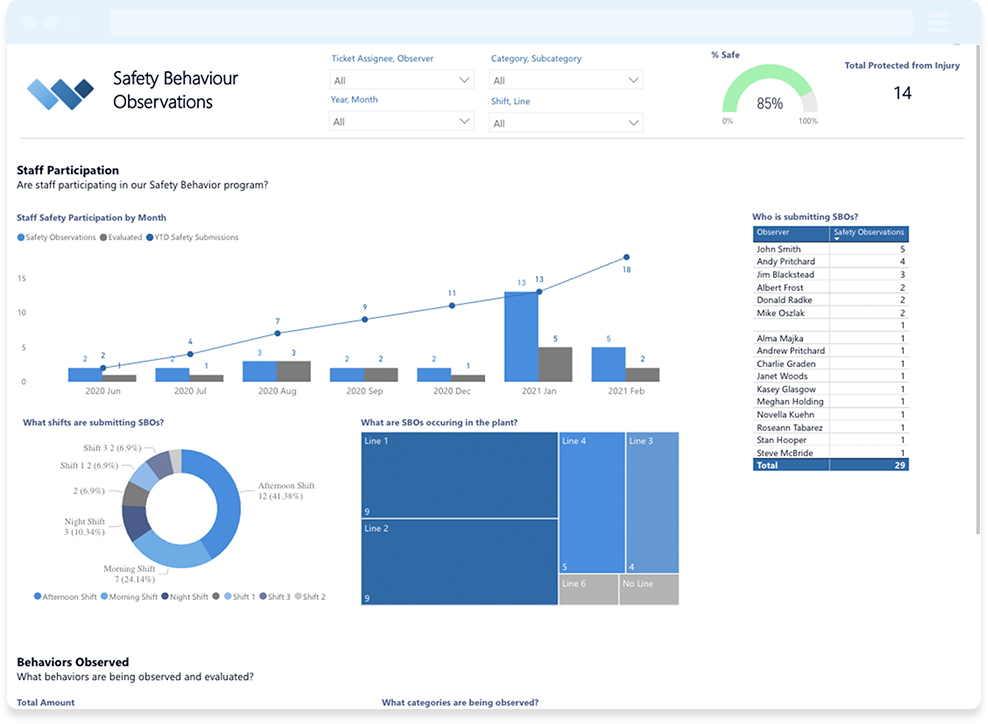
4. Simplicity & Structure
Staff are guided through a highly accessible process, which are built based on industry best practices.
Digitization provides opportunities to allow for greater clarity of purpose and process, so that staff are not confused by complexity.
For example, conditional logic allows for you to show only form fields that are relevant to the specific situation. If the staff member wants to report a near-miss, there is no need to report an injured person - so that field will not be shown.
You can also place conditions on fields that need to be satisfied before the form is submitted. For example, you can make inputs required and/or alert users that a number is outside of a predefined range.
Digitized forms also allow for greater structure, so that each form is filled out the same way. This helps you define SOPs and understand process deviations so they can be more quickly corrected.
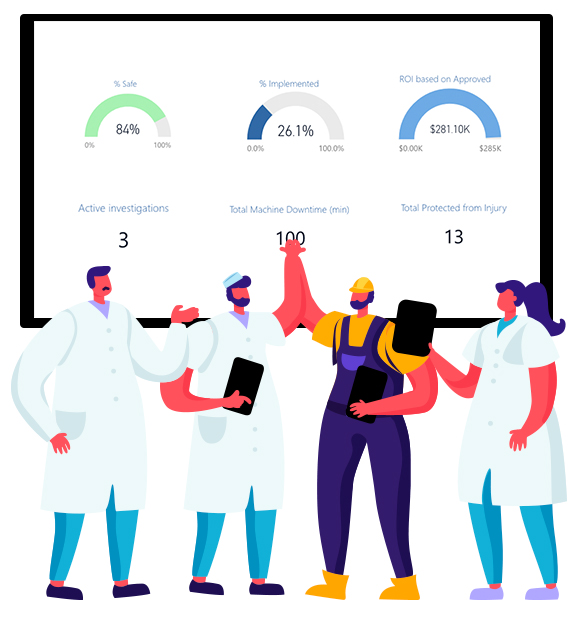
5. Compliance
Peace of mind that everything is done per internal and regulatory requirements.
With paper forms, how can you be sure that processes are being executed in such a way that they adhere to internal SOPs and/or regulatory requirements.
Paper forms do not provide real-time updates, they do not automate alerts, and they do not promote simplicity and structure. Because of this, they are not conducive to compliance. Paper makes it harder to ensure the job is done correctly.
Many manufacturers come to digitization because they have been fined by regulators for not adhering to required practices. Staff take short cuts because they only need to “pencil whip” a paper form to “confirm” something has been completed.
Digitization offers many options to confirm compliance. For example, you can require staff to take photos of things when they occur. Submissions are time stamped so you know when they were sent through.
Our platform adheres to FDA 21 CFR Part 11 and SOC 2 compliance.
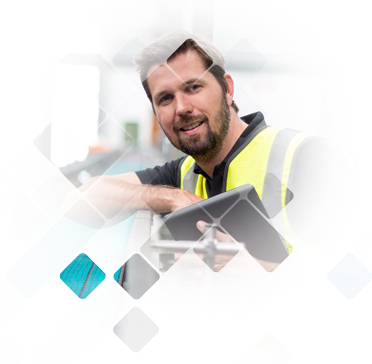
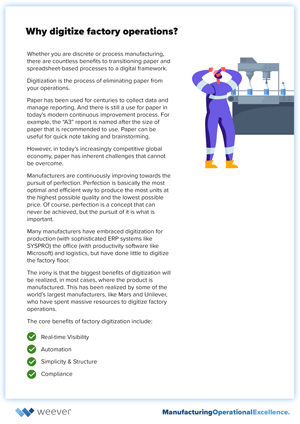
If you like this blog and would like to download it in PDF format, please provide your email address and we will send you a copy.
Hope this list helps you move your digitization project forward.
Weever is Operational Excellence Software that empowers the pursuit of perfection by enhancing operational visibility, collaboration and productivity in quality, maintenance, safety and production.
To learn more about how Weever can help you attain results in OpEx, please feel free to get in touch.
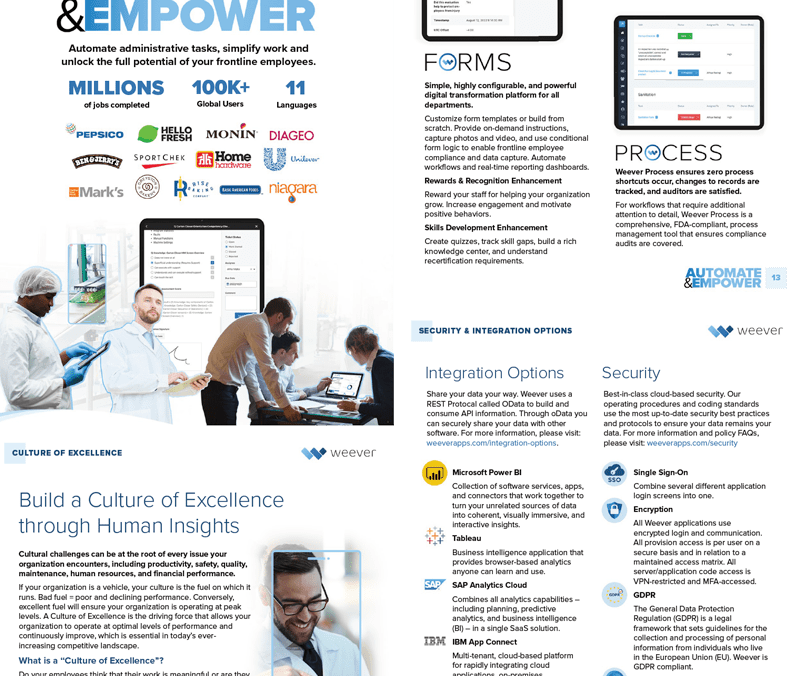
Learn about the Platform.
Download the brochure to get all the details about how Weever works.
